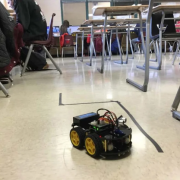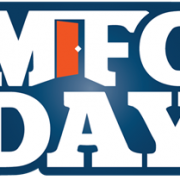How Are Postsecondary Certifications Affecting the Lives of Working Americans?
How are CTE certificates affecting the way people work in America?
We recently spent some time researching current CTE data compiled by the National Center for Educational Statistics. They provide some thought-provoking insights into how certifications are changing the way Americas live and work.
Here are some of the statistics we found, based on data from the NCES’s most recent study year, 2016. Please note that the figures given represent the percentage of the 196,343,000 Americans whose data was included in the study. (Note that the U.S. population is currently about 327,000,000.)
Men are not outpacing women in the acquisition of postsecondary certifications
- 8% of American men have postsecondary certificates
- 8% of American women have postsecondary certificates too
Black non-Hispanic Americans are most likely to have earned postsecondary certifications
- 11% of black non-Hispanic Americans have earned postsecondary certificates
- 10% of “other” non-Hispanic Americans have earned postsecondary certificates
- 8% of white non-Hispanic Americans have earned postsecondary certificates
- 7% of all Hispanic-Americans have earned postsecondary certificates
- 5% of Asian and Pacific Islander Americans have earned postsecondary certificates
But those statistics do not tell the whole story. For example, 20% of white non-Hispanic Americans have obtained certification in the form of licenses, vs. about 14% of all other groups.
Older Americans are more likely to have earned certificates
- 4% of Americans age 16-24 have earned postsecondary certificates
- 7% of Americans age 25-34 have earned postsecondary certificates
- 9% of Americans age 35-44 have earned postsecondary certificates
- 10% of Americans age 45-54 have earned postsecondary certificates
- 10% of Americans age 55-65 have earned postsecondary certificates
Americans who have not completed four years of college are most likely to have certificates
- 2% of certificate holders have not completed high school
- 7% of certificate holders have completed high school or equivalent
- 15% of certificate holders have completed some college, no degree
- 17% of certificate holders have earned associate’s degrees
- 5% of certificate holders have earned bachelor’s degrees
- 5% of certificate holders have earned graduate or professional degrees
Credentialed individuals’ penetration into the labor force is surprisingly small
- 8% of certificate holders are in the labor force
- 10% of certificate holders are unemployed
- 13% of certificate holders are “underemployed”
Credentialed individuals work in a variety of fields
- 19% of certificate holders work in installation and repair jobs
- 14% of certificate holders work in healthcare jobs
- 13% of certificate holders work in protective services jobs
- 10% of certificate holders work in administrative support jobs
- 10% of certificate holders work in manufacturing and farming jobs
- 9% of certificate holders work in construction and extraction jobs
- 8% of certificate holders work in computer jobs
- 8% of certificate holders work in personal, building and grounds jobs
- 8% of certificate holders work in transportation jobs
- 7% of certificate holders work in business management and operations (except financial)jobs
- 7% of certificate holders work in arts, design, entertainment, and media
- 6% of certificate holders work in science, engineering and architectural jobs
- 6% of certificate holders work in food preparation and serving jobs
- 6% of certificate holders work in sales jobs
- 5% of certificate holders work in community, social service, and legal jobs
- 4% of certificate holders work as financial specialists
- 4% of certificate holders work in education and library jobs
To share your views about what it takes to find the right path to professions, Participate in a National Career & College Pathway Study and receive information on college and career opportunities which match your interests.
Related Posts
What Influences Students to Enter Manufacturing Careers?
While Students Compete to Get into College, Good Skilled Jobs Remain Unfilled
Does CTE Represent a Return to Apprenticeship Models?
Certification Programs: The “Missing Link” in Higher Education
We offer help to reach your college dreams.
That’s why the Student Research Foundation is offering high school students and their families up to $15,000 in college scholarship funds! Learn more and Apply.










Leave a Reply
Want to join the discussion?Feel free to contribute!